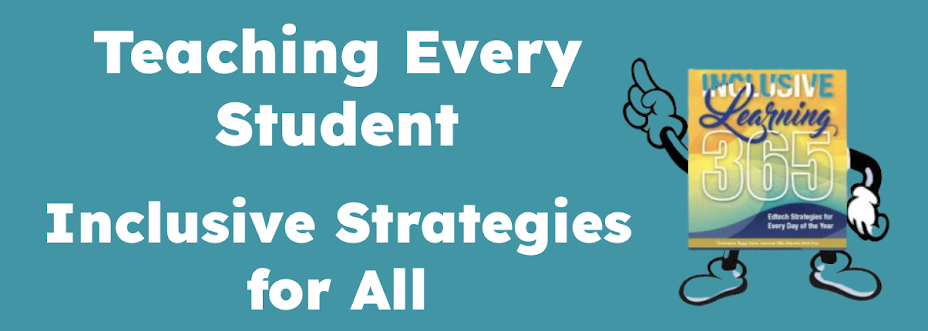One of my daughter's friends is part of Teach America in Brownsville, Texas and she was home for the holidays. We were talking about AT and she said in her district they consider that things like modified tests are AT. (Huh?)
And at a recent conference where I spoke, a special educator who had read one of my evaluations, commented that I don't do just AT because I include solutions using readily available (for example, features in Microsoft Word) or free software. (Wow! That took me by surprise!)
So, what is AT?
The federal definition from IDEA, 2004 says:
Sec. 300.5 Assistive technology device.
Assistive technology device means any item, piece of equipment, or product system, whether acquired commercially off the shelf, modified, or customized, that is used to increase, maintain, or improve the functional capabilities of a child with a disability. The term does not include a medical device that is surgically implanted, or the replacement of such device.
Sec. 300.6 Assistive technology service.
Assistive technology service means any service that directly assists a child with a disability in the selection, acquisition, or use of an assistive technology device. The term includes--
(a) The evaluation of the needs of a child with a disability, including a functional evaluation of the child in the child's customary environment;
(b) Purchasing, leasing, or otherwise providing for the acquisition of assistive technology devices by children with disabilities;
(c) Selecting, designing, fitting, customizing, adapting, applying, maintaining, repairing, or replacing assistive technology devices;
(d) Coordinating and using other therapies, interventions, or services with assistive technology devices, such as those associated with existing education and rehabilitation plans and programs;
(e) Training or technical assistance for a child with a disability or, if appropriate, that child's family; and
(f) Training or technical assistance for professionals (including individuals providing education or rehabilitation services), employers, or other individuals who provide services to, employ, or are otherwise substantially involved in the major life functions of that child.
By definition it is a device. A test is NOT a device and to modify it would not constitute transforming it into assistive technology.
A computer with software, specialized or not, IS a device and there are many programs that "increase, maintain or improve the functional capabilities of a child with a disability." For some students, it may be the only way they can access the curriculum which is required by law ("to provide meaningful access to the general curriculum", IDEA, 1997).
Let's look at one example: a fifth grade student with a reading disability who is reading several grade levels below their current grade requires assistive technology to access the curriculum. This can take many forms but often includes the use of text-to-speech to remove the decoding obstacle so that the student can read (have access to) the same information as the other students in the class. Now there are many programs that offer this feature from free (built into Microsoft Word, ReadPlease and WordTalk) to more expensive solutions such as SOLO, Kurzweil, Read & Write Gold, etc. To me, any one of these solutions is assistive technology as they allow the student with the reading disability to increase, maintain or improve their functional capabilities and have access to the curriculum.
So, is it AT if you recommend graphic organizing software such as Inspiration to help a student with a written language disability organize and improve their writing? But is it not AT if you make the same recommendations using features in Microsoft Word (diagram gallery to create the graphic organizer, embed audio prompts using the Insert Sound Object feature and use the text-to-speech built into Word or used with WordTalk, a free text-to-speech download)? I make both kinds of recommendations and believe they are assistive technology recommendations.
When the Reauthorization of IDEA 1997 included assistive technology as one of the five considerations that must be discussed for ALL students on IEPS, it opened up many new possibilities for students with learning disabilities or other "high-incidence" disabilities. Dave Edyburn reports that the "unintended consequence of the federal consideration mandate essentially added 4 million students to the AT caseload by extending AT devices and services to high incidence disabilities." Prior to this, assistive technology was considered primarily for students with mobility, sensory or communication difficulties.
In my professional practice, I believe that assistive technology is really about "thinking outside the box," to promote student success.
So, what do you think? What is your definition of assistive technology? Have you run into similar issues?

No comments:
Post a Comment